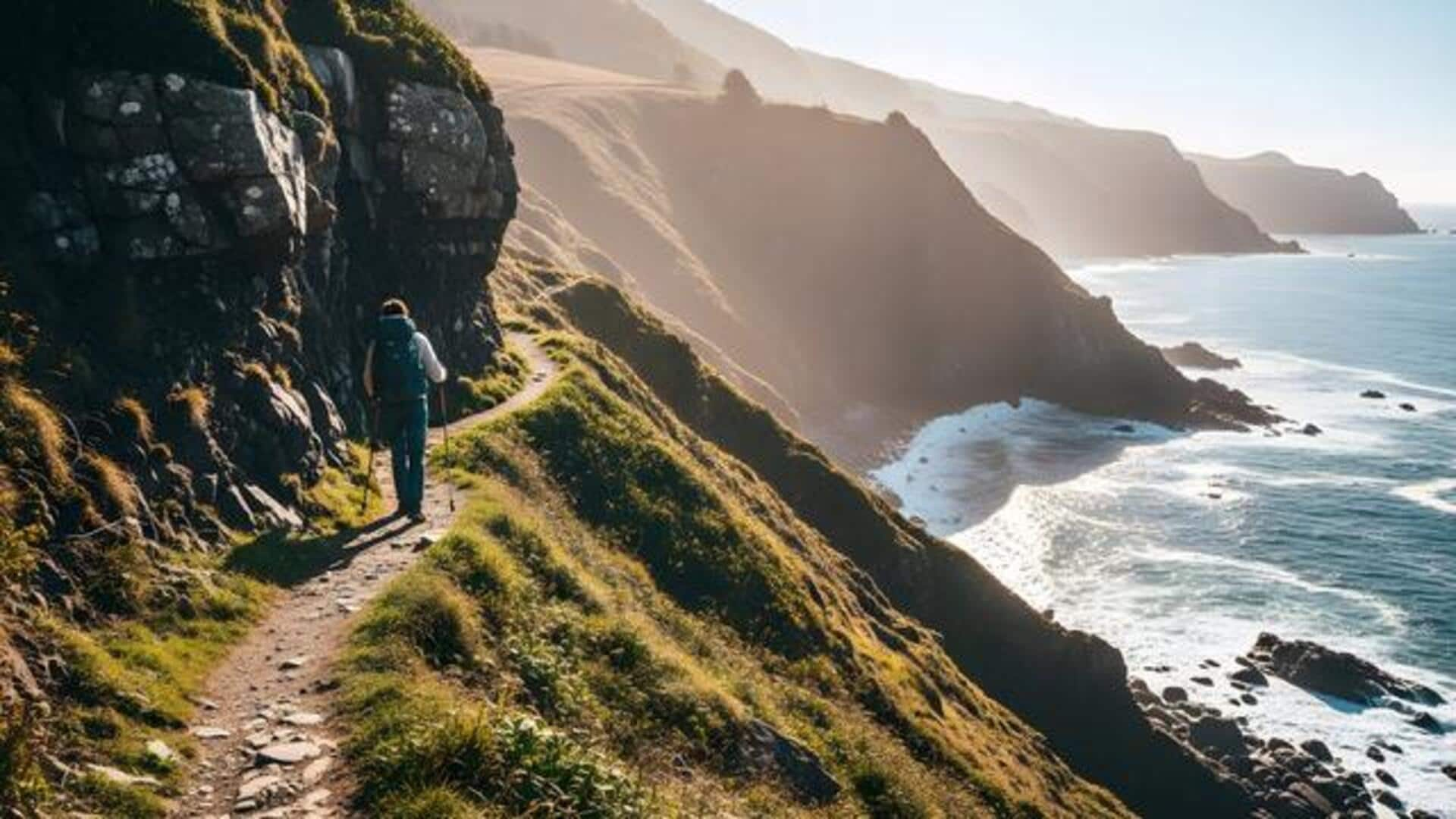
Cliff-side hiking: Tips, tricks, and must-knows
What's the story
Exploring remote cliff-side hiking trails is an adventure of a lifetime for adventure enthusiasts. These trails not only test your physical limits but also offer the most stunning views that make the effort worth it. From rugged terrains to serene landscapes, every trail has something unique to offer. Here are some of the most stunning cliff-side hiking trails around the world.
Ocean Vista
Trail with panoramic ocean views
One of the most amazing parts of cliff-side hiking are the breath-taking ocean views offered by many trails. Coastal cliff trails often give unhindered views of endless oceans, where hikers get to see mighty waves crashing against the rocks beneath. Usually, these trails have well-defined paths and safety barriers to keep the hike safe amid nature's magnificence. Fresh sea air and wide views make these hikes especially refreshing.
Mountain flora
Mountainous cliff trails with unique flora
Mountainous cliff trails often have unique flora, which adds an element of intrigue to the hike. These trails may pass through diverse ecosystems, showcasing rare plant species adapted to harsh conditions. Hikers can observe vegetation clinging tenaciously to rocky surfaces, making for a vibrant tapestry against stark cliffs. Such environments offer educational opportunities for those interested in botany and ecology, while providing a visually striking backdrop for photography enthusiasts.
Solitude seekers
Remote trails offering solitude and serenity
For those wanting to escape busy city life, remote cliff-side trails are the best for unmatched serenity. These less-trodden paths give hikers a chance to immerse in nature without being disturbed by crowds or the urban clamor. The peace on these secluded routes makes for a perfect backdrop for reflection and mindfulness practices amid breathtaking sceneries.
Safety first
Safety tips for cliff-side hiking adventures
Considering safety is the first rule of cliff-side hikes, given the dangers of loose rocks or steep drops. Always stick to marked paths and pay attention to warning boards. Factor in weather patterns that can impact trails' stability before heading out. Wear appropriate footwear for good grip and support. Carry enough water, especially on longer treks with fewer access points. It's good to have emergency contact numbers in case of any unforeseen circumstances.